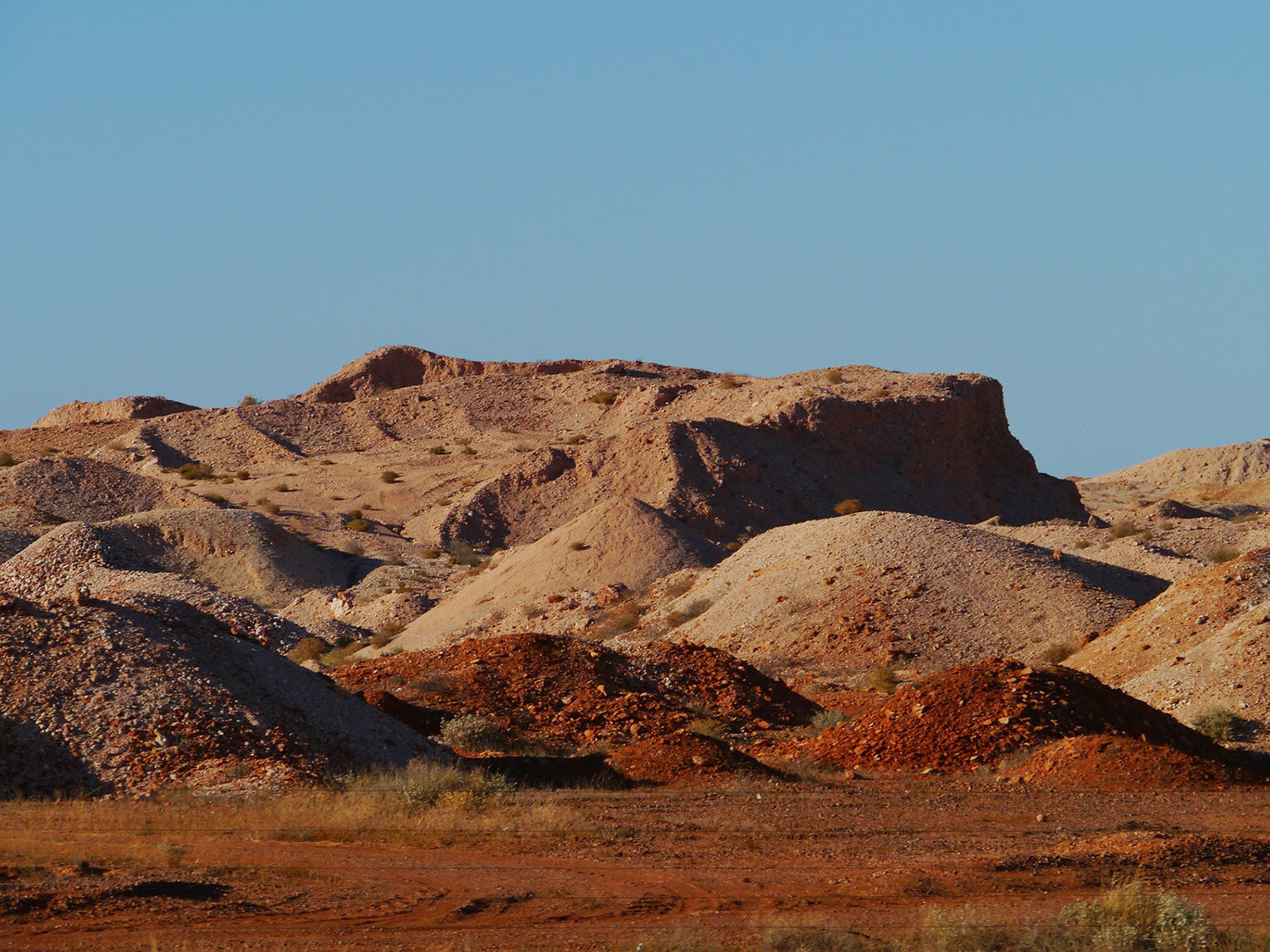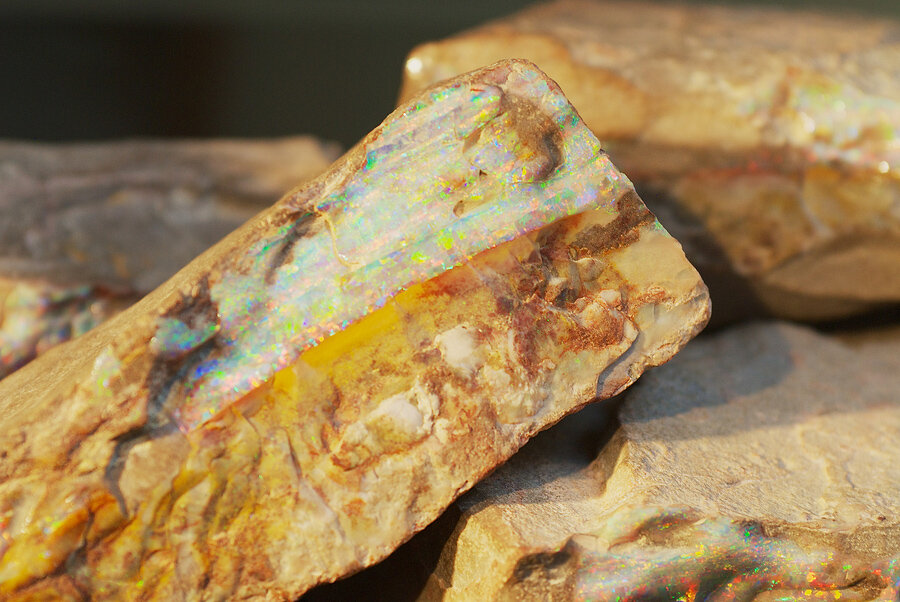
Myths and Legends
The Opal possesses a fascination that no other gemstone has. They have a unique, magnetic warmth with their wonderful glowing colors. The colors are not found in any other gemstone, and their beauty has stirred the hearts of artistic souls and fueled a passion for mankind for centuries.
The history of the opal goes back to the dawn of time. The opal was adored by the ancient Romans for two hundred years before Christ. Pliny, a Roman Historian, described the opal in glowing terms, "For in them you shall see the living fire of the ruby, the glorious purple of the amethyst, the sea green of the emerald, all glittering together in an incredible mixture of light."
The roman Senator, Nonius, owned a beautiful opal that Mark Anthony so dearly wanted to buy as a gift for his lover, Cleopatra. Under the threat of death to sell his opal, he preferred to exile rather than part with his precious gem.
The first name for the gemstone was given by the Romans. The name was ‘Opalus,’ which means “in part a stone.” The Greeks later changed it to 'Opallos', which means “to see a color change.”
There are many varied beliefs and ideas surrounding opals. The Arabians believed they were magical gemstone that fell from the heavens. The Orientals believed opals were an 'anchor gemstone of hope'. Some medieval Europeans attributed strange powers to them, such as invisibility and knowledge.
Throughout those long and colorful centuries, this prized and precious gemstone has been mined in many countries. The most noted opal mines are the Hungarian, Eastern Czechoslovakia, and Australian mines. The land of the Southern Cross was where this breathtaking queen of gems decided to really make her home. She then hid herself away like a delicate child playing hide and seek throughout the stark beauty of the timeless deserts.
There is little doubt as to the quality of Australian opals since they are the finest in the world. The history of opals goes back to the middle of the last century, where opals were first discovered on Tarrawilla Station about 50 miles north of Adelaide. There is no record of Australia's first commercial mine, though there is little doubt that the birthplace of the industry was in Queensland. In 1872, there was the first discovery of opal on Listowel Downs, but from that day, there has never been a mine there. There are only some surface prospects.
Australia is blessed with most of the world's variety of opals. The Black Opal is the rarest and most valuable opal. Australia has 99.9% of the world's supply of the famous gem, which mostly comes from Lightning Ridge. The term “black” refers to the dark, lustrous, and radiant colors.
The Boulder opal comes in many varieties all the way from black to crystal. This opal is found in crevices and cracks throughout ironstone boulders. Owing to the thinness of most seams, tones of exquisite beauty are cut from the boulders. There is a natural backing of ironstone left on the opal.
Light Opal, the most abundant in Australia, is found mainly at Coober Pedy. This supplies possibly 90% of all production. Gem grade is a magnificent and translucent material known as crystal.
By 1875, there had been many wonderful finds, especially throughout the Kyabra Hills of South West Queensland. There was no steady market for the newfound treasure. Mr. H. Bond from Toowoomba, Queensland in 1879, is credited with the first attempt to establish an industry. He floated a company in London with opals from famous mines such as Aladdin, Scotsman and Coonavilla.
Bond’s failure was due to many factors. The gem merchants found it hard to accept the fact that this new brilliant colored gem from Australia was not man-made. The problem was that the world had never seen anything so startlingly beautiful before. All they had known for centuries was the milky type of opals from Hungary. Though his effort went unrewarded, it was not unnoticed by Queen Victoria. Queen Victoria was an ardent opal lover, who granted him a 40-acre freehold title over the Aladdin Mine, the only such title in that part of Queensland to this day.
Ten years passed before another attempt was made to establish the industry. In 1889, Tully Wollaston, a young entrepreneur from Adelaide, stamped his name across the pages of Australian opal history with his visit to the Kyabra Field. There were only two or three miners in the hills at the time. Charles Whitehead worked at Breakfast Creek and was the first miner in late January, 1889. Sixty-one small pieces of opal were sold for twenty-seven pounds and ten shillings ($55.00 in today's money). To use Wollaston's own words, "It was small stuff, but very brilliant and the dancing lights pricked my hand in a delicious way."
Wollaston took Charles Whitehead's and Joe Bridle’s opal from Stoney Creek to London in July, 1889. This formed the basis of the industry we have today. Wollaston was instrumental in marketing all of Australia's major finds. There was a beautiful crystal in Queensland in 1889. In 1890 at the White Cliffs, there was a soft, delicate, and light opal. Lightning Ridge was the home to breathtaking black gems in 1903. The world's largest supplier of the light opal was located in Coober Pedy in 1915.
There are two myths about the opal I want to dispel at the start. The first myth is the opal is bad luck unless it is your birthstone. This story started in London in the 1890's when the opal was making serious inroads into the diamond market. Some suspect the rumor was started by diamond merchants. Prior to that, it was considered a lucky gemstone. It is still considered a good luck gemstone in Australia where they say, "The only bad luck about the opal is not owning one!" It is one of the most popular gemstones in Japan and is often used as an engagement ring with no bad luck connotation there either.
The other myth is that opal is too fragile to wear. Opal is as hard as jade and amethyst and harder and tougher than turquoise. It is true that both diamonds and opals can crack. The cause of cracking in opals is usually due to an inappropriate setting. Your opal will provide a lifetime of pleasure and beauty if properly set and cared for.
Another popular myth is that you should soak your opal in water every so often. If your opal is not a form of hydroplane and is a good solid Australian opal, you are just wasting your time soaking it. Go ahead and soak it if you like, but you won't enhance it at all.

